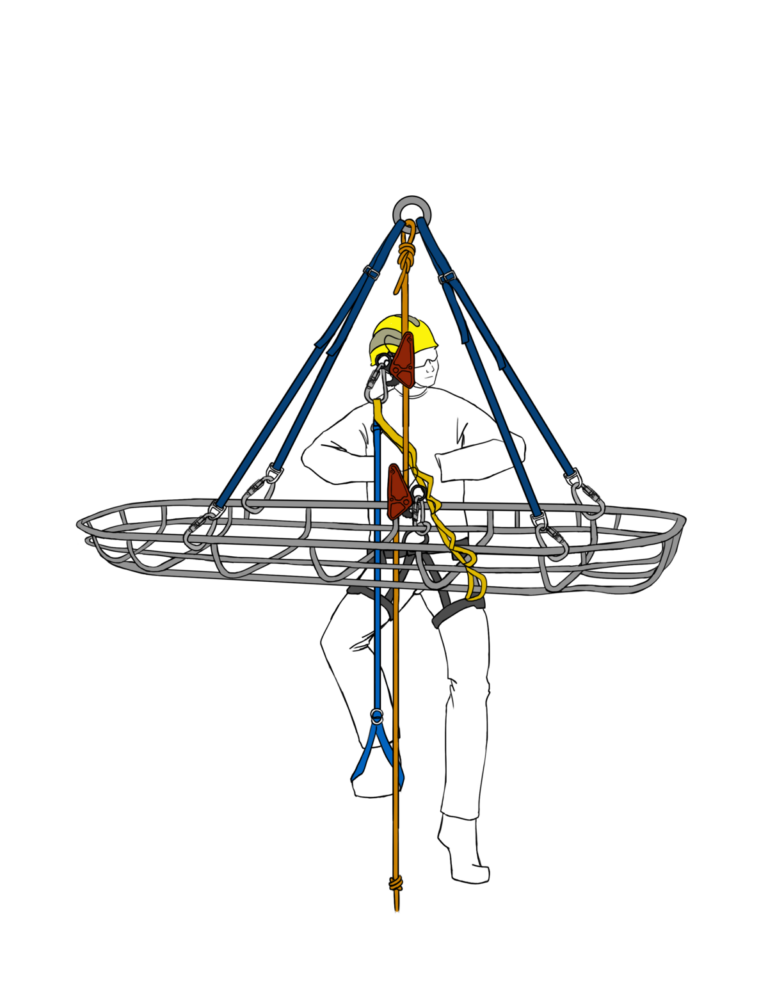Earlier this week, I was asked to provide a quick list of talking points for a group of technicians who regularly gather for their own MasterMind group. Obviously I was happy to oblige. I suggested that he separate the question into two parts..
- Rope Rescue Gear/Equipment Topics
- Rope Rescue Field Problem Topics
Advanced rope rescue rigging techniques require specialized equipment to ensure the safety and effectiveness of operations. This equipment is designed to handle the unique challenges of vertical and technical rope rescue scenarios. Here are some key types of equipment commonly used in advanced rope rescue rigging:
- Ropes and Webbing:
- Static Kernmantle Rope: These ropes have low stretch and are ideal for creating stable anchor systems.
- Dynamic Rope: Designed to absorb energy in case of falls, making them suitable for lead climbing and dynamic scenarios.
- Webbing and Slings: Used for creating anchors, extending protection, and building systems.
- Harnesses:
- Full-Body Harnesses: Designed to distribute the impact forces evenly across the body in the event of a fall.
- Chest Harnesses: Used to prevent the user from flipping upside down during rope access or rescue.
- Hardware:
- Carabiners: Used for attaching ropes, slings, and other equipment to harnesses and anchors.
- Pulleys: Essential for creating mechanical advantage systems, allowing rescuers to lift heavy loads with less effort.
- Ascenders and Descenders: Devices used for ascending and descending ropes safely.
- Figure-8 Descenders: Provides friction to control the descent speed during rappelling.
- Anchors and Anchor Systems:
- Static and Dynamic Anchors: Fixed points to which ropes and systems are attached.
- Multi-Point Anchor Systems: Configurations that distribute forces across multiple anchor points for added redundancy and strength.
- Rigging Plates and Multipliers:
- Rigging Plates: Devices with multiple holes to organize and separate ropes and anchor points.
- Mechanical Advantage Systems: Pulley systems used to create mechanical advantage for lifting heavy loads.
- Rope Grabs and Prusiks:
- Rope Grabs: Used for ascending or descending ropes safely while allowing adjustment of rope length.
- Prusik Knots: Friction knots that can grip a rope when loaded, allowing climbers to ascend or descend with control.
- Rescue Belay Devices:
- Load-Release Belay Devices: Allows the belayer to release the load under tension, enabling precise control during rescues.
- Helmets and Protective Gear:
- Helmets: Protect the head from falling debris and impact during rescue operations.
- Gloves: Provide hand protection and improve grip while handling ropes and equipment.
- Personal Protective Equipment (PPE):
- Fall Arrest Lanyards: Prevent falls by arresting the user’s movement.
- Fall Arrest Devices: Activates if a fall occurs, reducing impact forces on the body.
- Patient Care
- Communication and Lighting:
- Two-Way Radios: Essential for coordination and communication during complex operations.
- Headlamps: Provide hands-free lighting in low-light or confined spaces.
Additional talking points could be:
Peace on your Days
Lance









